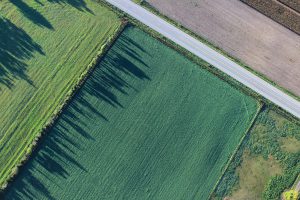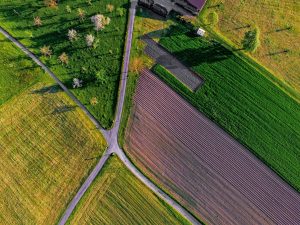A turf business: Agricultural loans don’t just include traditional farm businesses
Unless you regularly work with agricultural businesses or have experience of the agricultural sector, it can be easy to fall into the trap of thinking agricultural loans are simply for farmers who are doing traditional farming activities like growing crops or keeping livestock. But there are a whole host of other scenarios where an agricultural loan might be appropriate.
Finding agricultural loans in less obvious scenarios
One of our BDM team, Tracey, recently dealt with a case which is a perfect example of how agricultural loan opportunities can be overlooked. An introducer approached Tracey because he had a difficult enquiry to place. The introducer had tried various funding routes to no avail and was becoming frustrated that he couldn’t place this case. Desperate to find somewhere to place the case, he turned to Tracey, despite feeling that the case wasn’t suited to UK Agricultural Finance because he didn’t see it as an agricultural loan.
The introducer had tried various funding routes to no avail and was becoming frustrated that he couldn’t place this case. Desperate to find somewhere to place the case, he turned to Tracey, despite feeling that the case wasn’t suited to UK Agricultural Finance because he didn’t see it as an agricultural loan.
The case in question was a small independent turf business. They produced turf and sold it throughout the UK directly to the public. The owner of the business wanted to expand and had the demand to do so, but he was limited by the size of his current land for producing turf. He had been making up for his supply shortfall by buying turf from a large competitor who mostly supplied retailers rather than consumers.
The owners of the large turf business had decided to sell up and so offered the client, the smaller turf business, the chance to buy them out. This seemed like a great opportunity for business growth, but the client needed substantial funding which so far, the introducer had been unable to secure.
Why was this case difficult to place with traditional lenders?
The borrower needed a higher LTV than was comfortable for high street providers, which meant that most traditional banks were unable to help. This was compounded by the fact the borrower hadn’t used banks for lending very often, as he had built up his business using existing assets and the existing family-run organisation. This meant that the rigid assessment processes that high street banks use didn’t favour this borrower or take into account the wider context of the loan requirements.
When does a commercial loan become an agricultural loan?
The problem was, the introducer had been viewing this loan as a commercial loan prospect. The enquiry had been offered to commercial lenders, but they were unable to effectively assess the value of the land assets and combined value of the businesses. Instead, they saw it as a risk due to the smaller trader being the one buying the larger business, which is less common in commercial lending.
In truth, the loan was really an agricultural loan. Turf has to be grown somewhere, and the UK is amazing at growing grass outside in fields, so most turf businesses are simply farmers that farm grass rather than a more traditional crop. Therefore, using an agricultural loan and viewing the loan in the context of the bare land value was much more suitable than a commercial loan. The loan proceeds included the purchase of the business assets including the website domain property rights, a nearly 400-acre farm, and the associated farm buildings including a house.
Effectively, if a commercial enquiry comes from a business that has significant land ownership, particularly bare farmland, it could be suitable for an agricultural loan. Once a broker realises there is a significant land ownership element, it is worth asking further questions regarding the production processes, land use and background of the borrower to establish if there is a significant enough agricultural angle to make the loan suitable for us at UK Agricultural Finance.
What did we see that others didn’t?
As there was bare land available, we were able to use this and the property as security on a first charge basis. Our experienced underwriting team were also happy to consider the income of both businesses as part of the loan application. This was because we were able to recognise that the two businesses were not in direct competition but rather served different parts of the market and therefore could work alongside each other .
We realised that the two companies had strengths that complemented each other. For example, the larger business had established relationships with retailers, which introduced a new income stream for the smaller business. We also recognised that our future client had vast experience in the business, and therefore would be able to effectively combine and grow both businesses successfully. Following an on-site visit, Tracey also found out that the borrower worked seasonally to help grow and tend the turf so had good knowledge of the business management aspects and direct production skills.
There was also considerable cost savings for one of the businesses, and the doubling up of machinery meant that some could be sold or leasing arrangements not renewed. This further improved the overall profitability of both businesses. Over time, further cost savings would emerge as the businesses would be amalgamated in stages over the next few years to reduce the risk of any disruption to either business or their customers.
What is the expected exit strategy?
We have several options for exit routes, which is always useful on a loan of this size and type. The preferred option is to refinance to the high street within the next 5 years, once the amalgamation of the businesses is complete and the combined trade figures support a high street loan. Alternatively, the client had multiple properties no longer required to provide additional rental income or eventual sale to reduce the debt owed before refinancing after 5 years.
How did this loan support the borrower?

Following the approval of a loan by us, the borrower was able to purchase the second business. The transition was a smooth process and both businesses are trading well.
Our client had taken over the business from his father, who had diversified from farming into growing turf. The father still worked in the business, although retired, and he worked alongside his two sons. This is a generational farming business expanding and growing with the whole family actively involved, and by continuing to expand there are greater opportunities for more family members to be supported by the business. This allows the borrower to keep his family close and provide for them.
Through the loan and the business purchase, our client was able to reduce his business costs and expand his production of turf and business interests. The expansion was far quicker than if he had relied on the increase of trade because he combined two businesses that already complemented each other. This enabled him to expand the business and secure his family’s financial outlook with the continuation of his sons’ roles in the business.
If you have a loan you are struggling to place that you think maybe agricultural, why not get in touch and we can tell you right away if it is something we can assist with.
